Birds of North Georgia Mountains: A Birdwatchers Guide
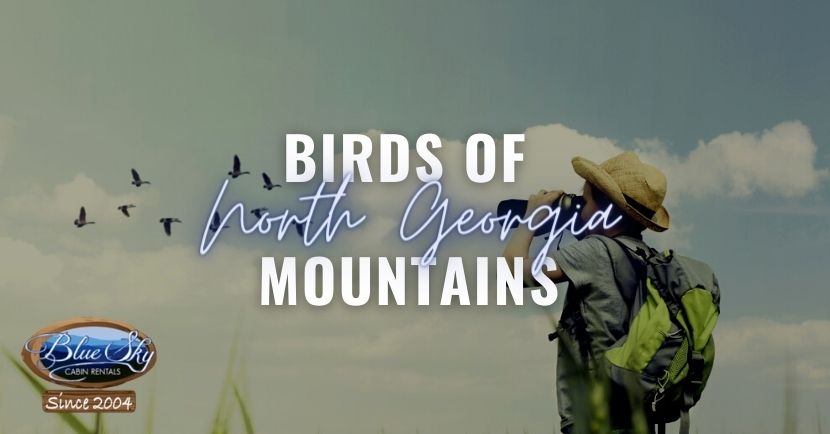
The mountains of North Georgia are home to a diverse population of birds, making it a popular destination for birdwatching. From tiny hummingbirds to awe-inspiring bald eagles, the types of Georgia birds in the Blue Ridge Mountains and surrounding preserves are sure to amaze.
During your mountain getaway, take advantage of the many birdwatching opportunities in the area and make memories that will last a lifetime. Just a short drive from Atlanta, you’ll be amazed at the abundance of wildlife so close to the city.
Whether you pull out your binoculars from the porch of your cabin rental and wait to see what comes to enjoy breakfast at the bird feeder or you head deep in the wilderness to see what you stumble upon, we’re sure all birding enthusiast will see their fair share of two-winged beauties.
Here’s what you need to know to really make the most of birdwatching in North Georgia.
Where to Go
North Georgia is an incredible destination for those interested in birdwatching. Whether you are brand new to the hobby or have been doing it for years, there is something exciting for everyone.
The 867,000-acre Chattahoochee-Oconee National Forest surrounds the towns of Blue Ridge and Ellijay and offers unmatched birdwatching opportunities.
Below you will find some of the most popular areas for bird enthusiasts and a visit to any of these locations provides a fantastic chance to spot birds of all kinds.
Your Cabin

Birdwatching in North Georgia doesn’t require long hikes or far-reaching journeys! You can see many species of birds from the comfort of your cabin and enjoy a fulfilling day of birdwatching.
Birds like the northern cardinal, Carolina chickadee, tufted titmouse, blue jay, red-bellied woodpecker, and American crow are all common backyard birds in North Georgia. If you’re lucky, it is possible to see more uncommon birds like red-shouldered hawks and the eastern screech owl.
Grab a mug of coffee, settle on the porch, and prepare for a relaxing birdwatching experience from the comfort of your cabin!
Lake Blue Ridge
.jpg)
Photo Credit: KevinYOLO
Not only is it a lovely place to spend the day on the water, Lake Blue Ridge is an excellent location for birdwatching. Along with some of the more common backyard birds, you can also spot some birds that are primarily found near water.
Species seen here include common loons, bufflehead ducks, mallard ducks, and even osprey and bald eagles.
Toccoa River
Go for a fun float down the Toccoa River and keep your eyes peeled for some exciting birds! Birdwatching opportunities along the river are fantastic, giving visitors a chance to see bald eagles and their nests, osprey, wood ducks, great blue herons, pileated woodpeckers, and more.
Carters Lake
.jpg)
Photo Credit: ScottyJ3785
Located just outside of Ellijay, Carters Lake is a great spot for birdwatching. The numerous diverse habitats, such as pine forests, hardwood forests, beaver ponds, rivers, lakes, and native grasslands, mean you have a wide variety of bird species in the area.
It is possible to see bald eagles, Acadian flycatchers, brown thrashers, ruffed grouse, and more.
Birdwatching Tips
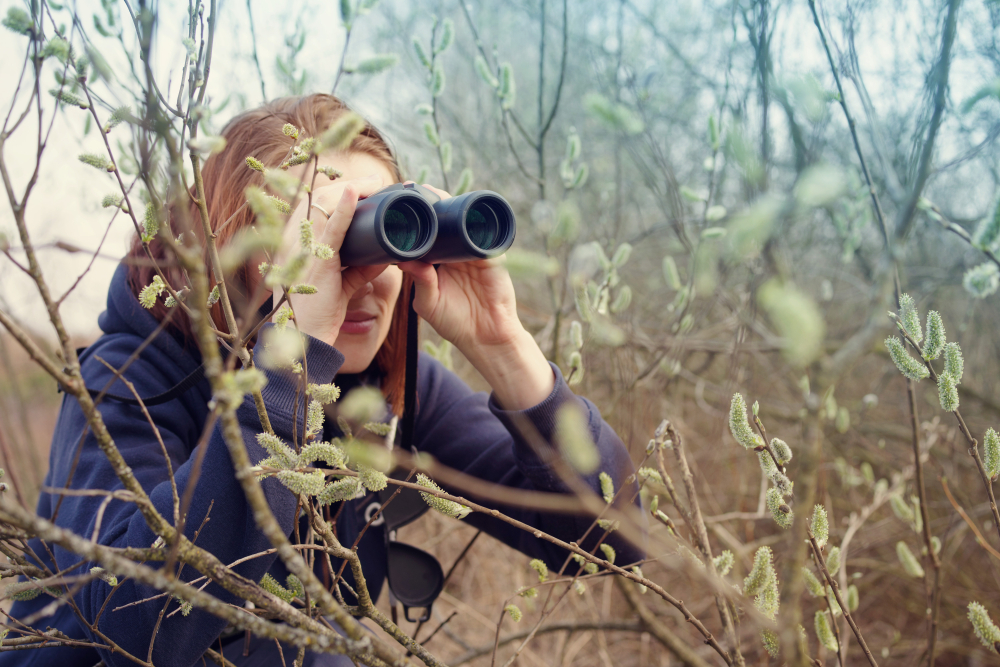
Photo Credit: savitskaya iryna
Rise and Shine
The early bird catches the worm, and early birdwatchers spot the bird. Shortly after sunrise is the best time to see many bird species and is your best shot of spotting some of the more reclusive species. Songbirds will be the most vocal in the morning hours as well.
Not only is it natural for birds to be ready to feed in the early morning, but they are also less likely to be disturbed by crowds of people. Birds can also be seen in the late afternoon and evening, but avoid midday when they are the least active.
Change Up Your Location
If you want to see a wide variety of bird species, you’ll have to find a wide variety of habitats. Some birds prefer evergreen forests, others deciduous, some need running water, and others prefer wetlands.
Even in one ecosystem, there are multiple habitats; some birds will be in branches high above, while others will be hiding in shrubby undergrowth. Keep your eyes open and don’t assume all the birds are in the sky!
Check out different areas of North Georgia for a well-rounded birdwatching vacation. From Lake Blue Ridge to the high elevation of Brasstown Bald, you have many unique habitats available to explore.
Keep the Sun at Your Back
One of the most simple tips for maximizing the chance of seeing birds is to ensure that you keep the sun behind you. The light will illuminate bird feathers and make them much easier to spot, and you won’t be blinded by the sun.
Consider Migratory Patterns
Having a general idea of the migratory patterns of birds in North Georgia will help you narrow down the best time of year to visit and what birds you might be able to spot during your trip.
Many birds make North Georgia their home year-round, meaning you’ll have no issue finding plenty of beautiful birds even if you visit in winter. Some birds are only possible to see in the wintertime, as they have migrated south to Georgia from cold northern climates. Others, such as the ruby-throated hummingbird, will migrate south from Georgia in search of warm climates for the winter.
If there are particular birds you are hoping to see, your best bet is to research their migratory patterns to ensure you visit North Georgia when the birds are around.
Remember Birdwatching Ethics
The American Birding Association has a code of ethics that is valuable knowledge for all birders, from beginners to experienced. It is based on respect and thoughtfulness for both nature and fellow birdwatchers.
- Respect and promote birds and their environment
- Respect and promote the birding community and its individual members
- Respect and promote the law and the rights of others
The full details of this code can be found on the ABA website, but the key takeaway is to remember to respect the birds and their environment, making every attempt not to disturb or stress any animals. It is also a good idea to remember the Leave No Trace principles whenever you are enjoying natural areas.
What to Bring
When preparing to go out on a birdwatching outing, there are a few things you want to ensure you have with you. Having the proper equipment gives you a better chance of spotting birds and means a more enjoyable day out.
Binoculars

Photo Credit: Krakenimages.com
The most essential piece of equipment for birdwatching is, of course, your binoculars. While some birds will be close enough to see with the naked eye, many of the best spotting opportunities will be at a distance.
Field Guide
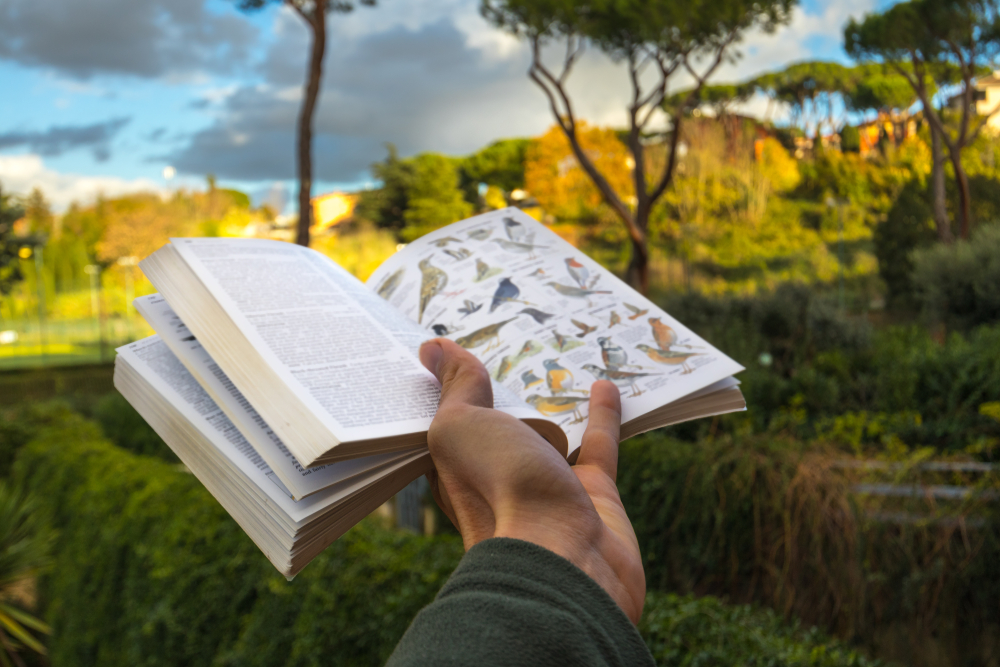
Photo Credit: 4thebirds
A field guide specific to the birds of North Georgia is a valuable piece of equipment for those looking to learn more about the avian species in the area. You can use the guide to identify bird species based on the illustrations and information provided.
Camera

Photo Credit: azure1
While not required for birdwatching, a good camera with a powerful zoom is a wonderful way to capture some beautiful shots of the birds you spot. Even if you only have your phone camera, a few pictures of the birds you see are a great way to remember the day and help with later identification.
Hiking Supplies
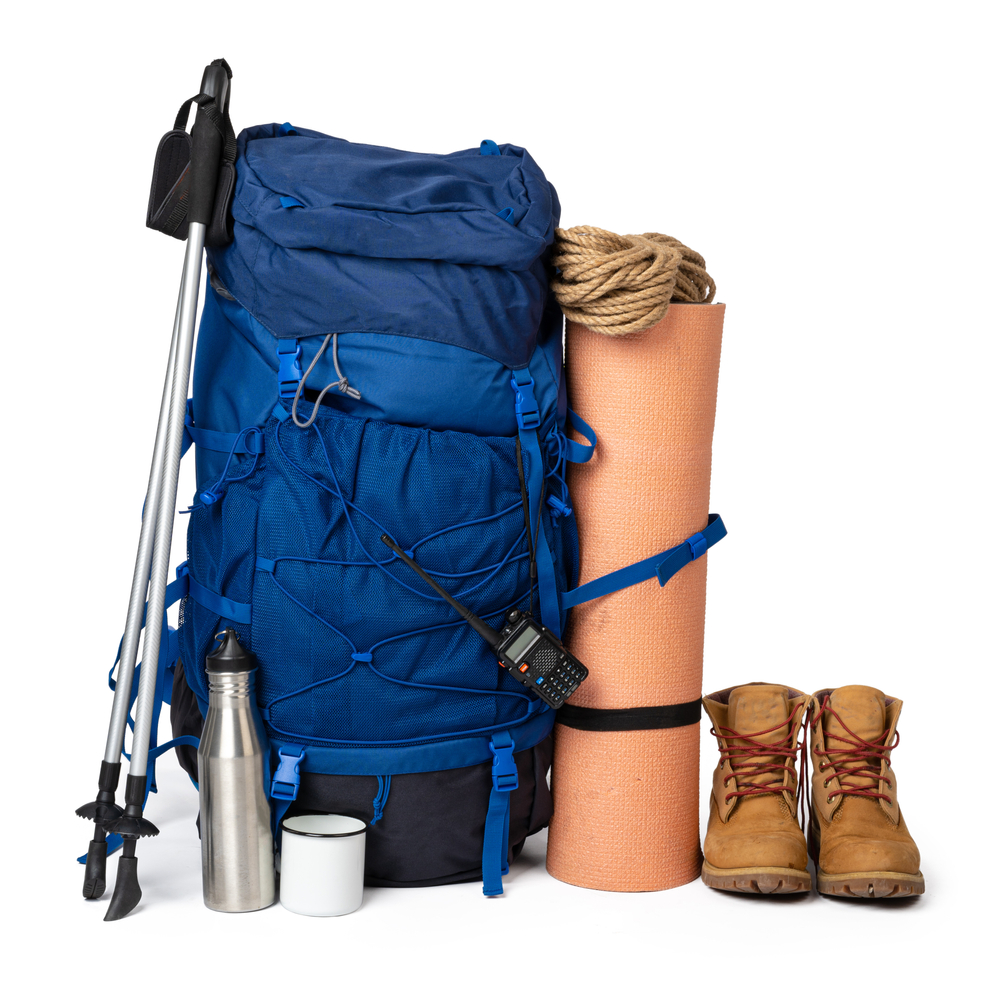
Photo Credit: FabrikaSimf
If you are heading out to search for birds on one of the many trails in North Georgia, you also want to be sure you are adequately prepared for the hike. It is a good idea to bring a backpack with water, snacks, a map, and any extra clothes you may need.
Birds of North Georgia
Hundreds of species of birds are found in the state of Georgia, and the North Georgia mountains are home to an incredibly diverse population. From huge bald eagles to tiny chickadees, this region is a birdwatchers’ paradise.
A field guidebook for North Georgia is a great way to learn about all the birds you may see, and this list will provide you with an idea of the bird species you might encounter.
Brown Thrasher
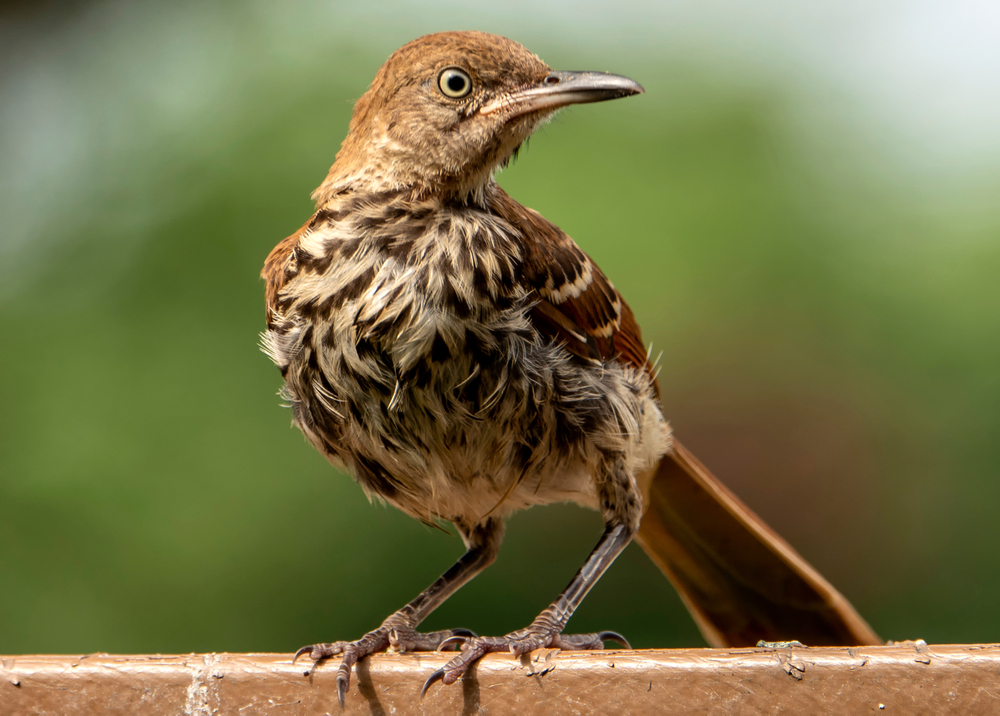
Photo Credit: Tony Quinn
No birding guide about Georgia would be complete without mentioning the Brown Thrasher. These large brown birds are not only accomplished songbirds, with one of the most extensive repertoires of songs in North America, but they are also the Georgia State Bird.
The brown thrasher is well camouflaged in their habitat of choice: dense thickets and shrubbery, often close to the ground. Look carefully in these areas to spot this special bird.
Woodpeckers
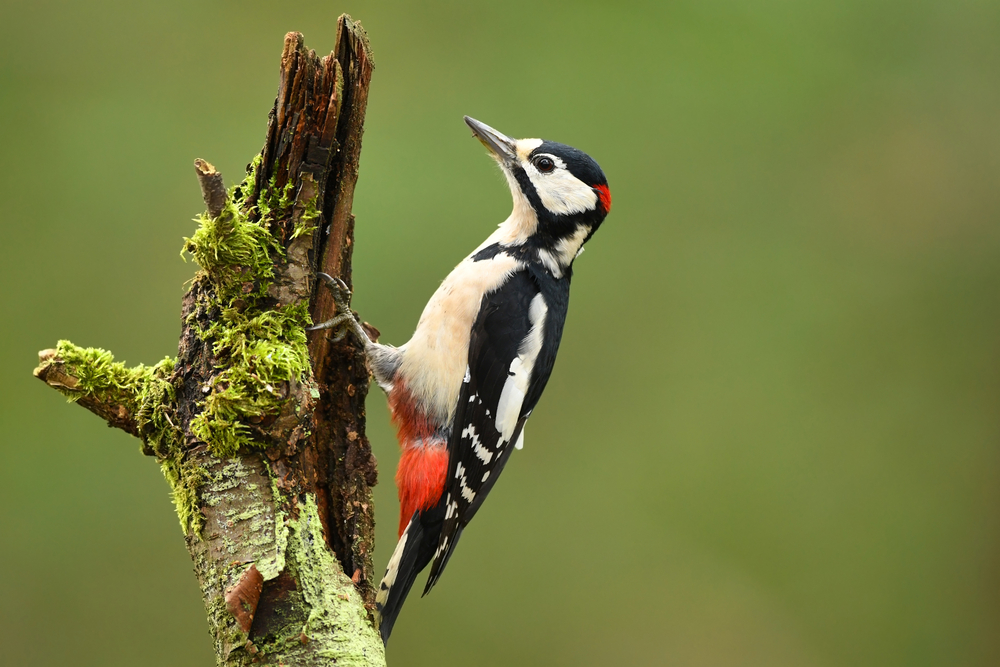
Photo Credit: Piotr Krzeslak
Woodpeckers are always a fun bird to spot and even more fun to hear. Often you will hear their namesake pecking on the trees around you before you spot them.
North Georgia is home to many species of woodpeckers, such as the largest species in the US, the pileated woodpecker, and others like the red headed woodpecker, downy woodpecker, red-bellied woodpecker, yellow-bellied sapsucker, hairy woodpecker, and northern flickers.
Hawks
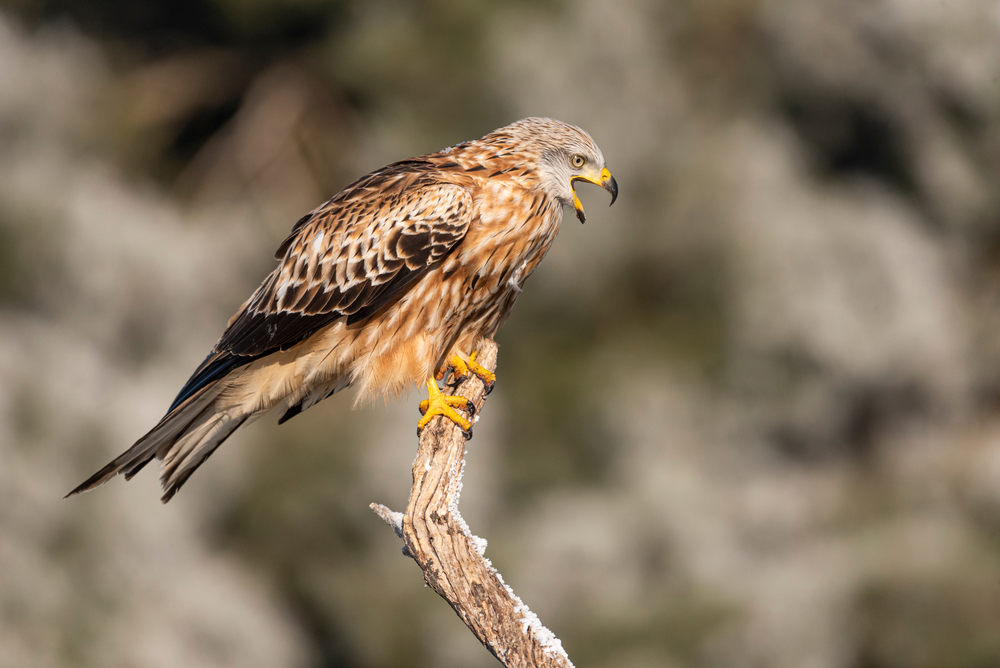
Photo Credit: AlvaroMZ
North Georgia is home to multiple hawk species, giving you an excellent opportunity to spot some of these gorgeous raptors. Species such as broad-winged hawks, red-shouldered hawks, red-tailed hawks, and Cooper’s hawks make their home in the mountains of North Georgia.
One of the best places to spot a hawk is in an open field at the forest’s edge. They can often be seen hunting for small rodents, waiting on tree branches or power lines as they use their keen eyesight to spot their prey. While many birds are more likely to be spotted in the early morning, hawks can be seen even in the warmth of the afternoon.
Peregrine Falcon
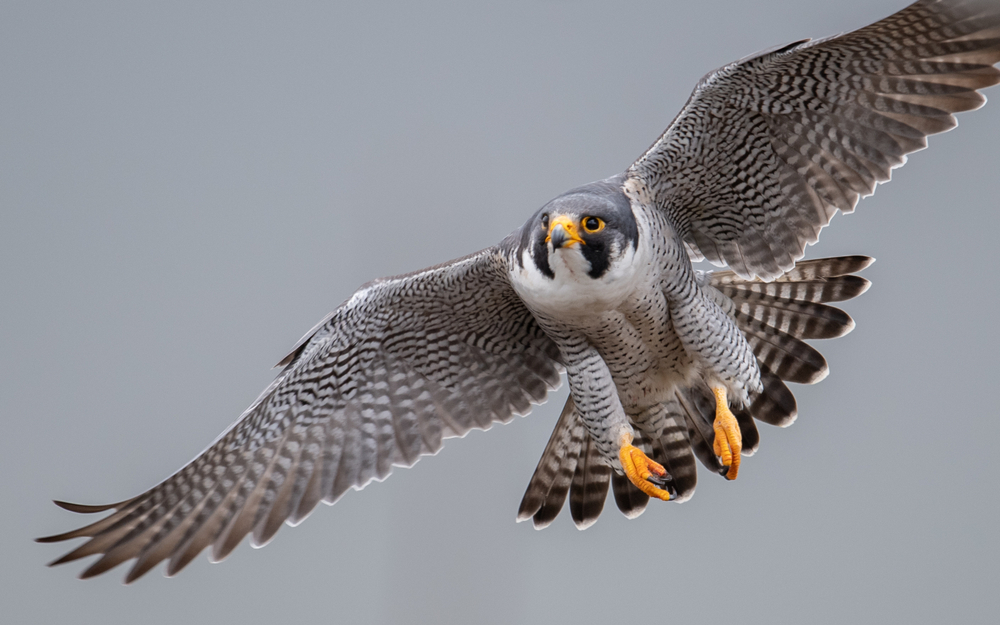
Photo Credit: Harry Collins Photography
The once critically-endangered peregrine falcon is an exciting spot for any birdwatcher. They are exceptional because peregrine falcons are the world’s fastest animal, with a dive speed of up to 200 miles per hour.
These beautiful birds are known for their fondness of high-altitude nests and can often be found nesting atop city skyscrapers. In North Georgia, some high-altitude areas offer the chance to spot the falcon. Tallulah Gorge is home to Georgia’s only known wild nest site.
Eastern Screech Owl
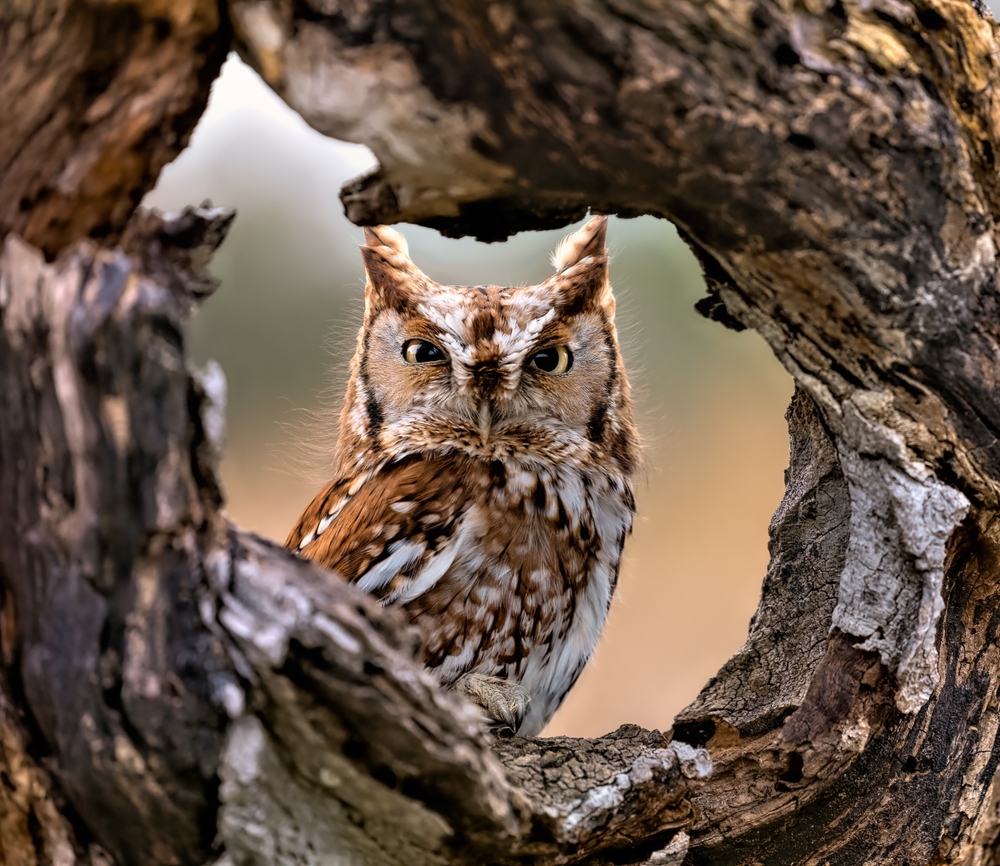
Photo Credit: Touched by light images
Spotting nocturnal birds can sometimes pose a challenge, but if you’re up for it, you might get lucky and see the eastern screech owl! These small, stocky owls are common in North Georgia but typically can’t be seen during the day.
At night, listen carefully and you may have the treat of hearing their namesake screech from the trees surrounding your cabin.
Great Blue Heron
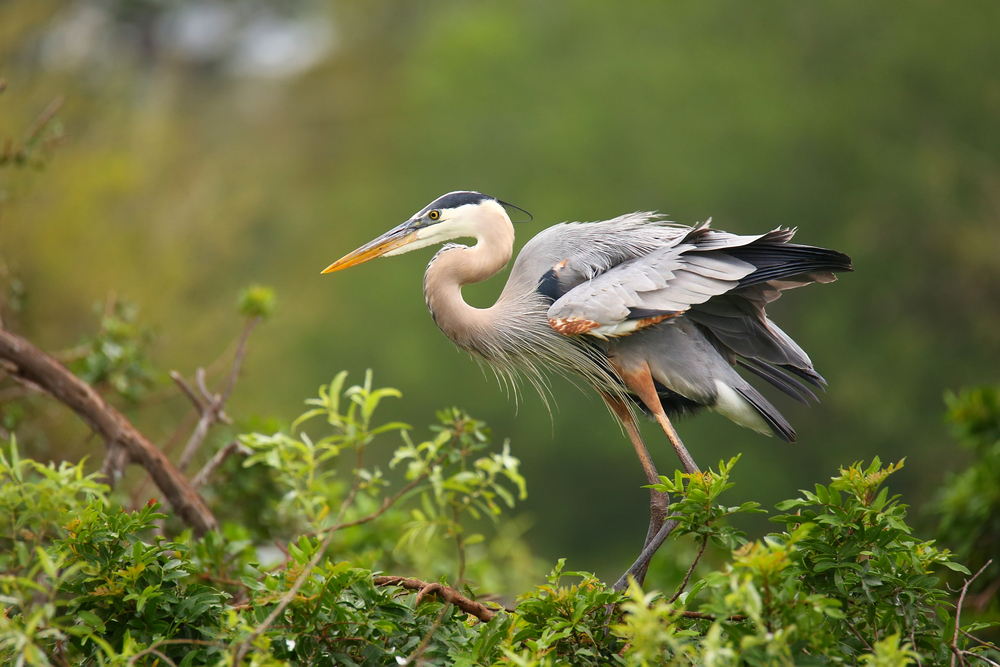
Photo Credit: Don Mammoser
Nothing reminds you that birds are related to dinosaurs quite like the great blue heron! These large birds are commonly spotted standing along the shores of rivers and lakes as they hunt for fish, amphibians, and insects. You might also spot them flying overhead, their six-and-a-half-foot wingspan an impressive sight to behold.
Great blue herons are resident birds in Georgia, so you can spot these mighty beauties all year round. Swing by Lake Blue Ridge, the Toccoa River, or any large stream for the chance to see a heron along the shoreline.
Osprey

Photo Credit: mutan
Spotting an osprey is always exciting, whether you are a seasoned birdwatcher or not. These huge raptors have wingspans up to five and a half feet long, and in spring, you may see their large nests in trees and power lines near water.
Feeding primarily on fish, you are most likely to spot an osprey near a lake or river. Lake Blue Ridge is a perfect place to see these birds, especially during their nesting season.
Bald Eagle
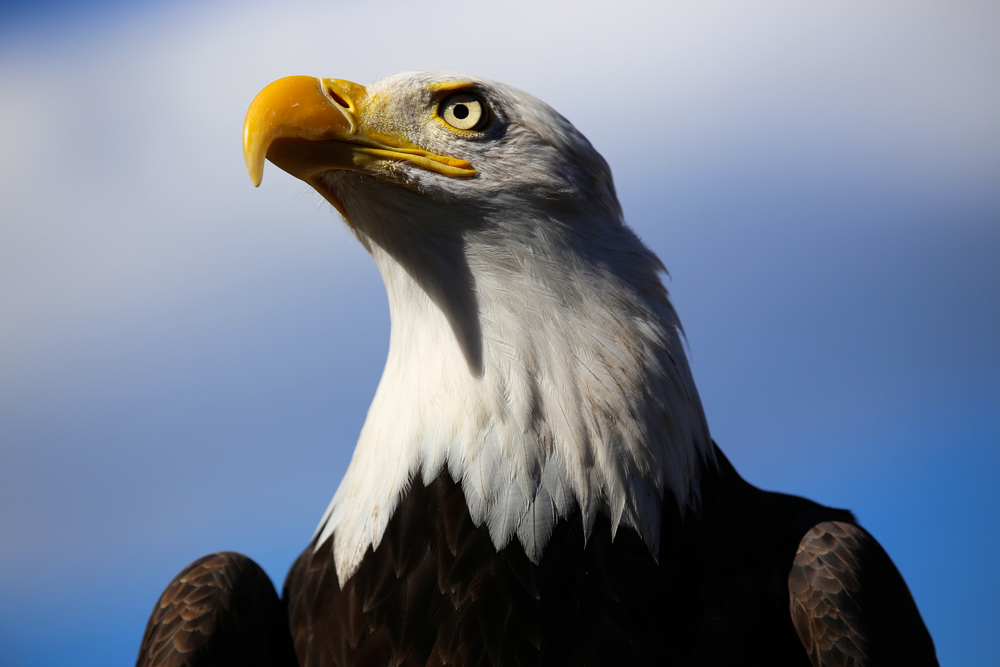
Photo Credit: Steve Boice
Bald eagles are truly an incredible sight to see, something that any birdwatcher will feel is part of their bucket list. Known as the symbol of freedom in the United States, bald eagles are not uncommon in Georgia and can be found nesting near bodies of water.
Head over to the Toccoa River during the summer months, and you might spot pairs of bald eagles flying overhead as they circle their nest. The adults sport recognizable white heads, brown bodies, and white tail feathers.
Eastern Bluebird
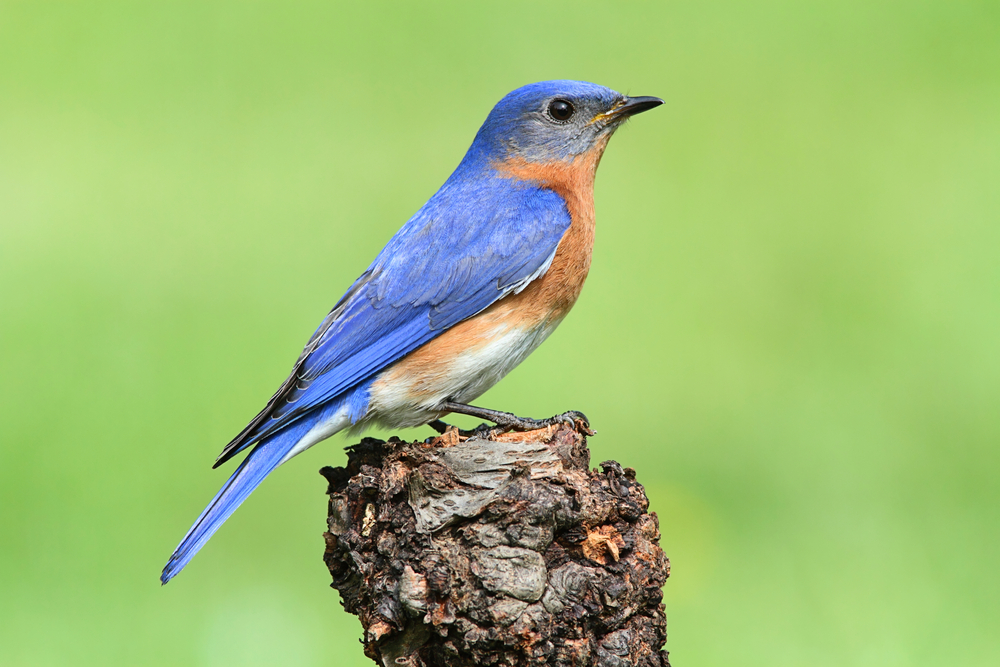
Photo Credit: Steve Byland
One of the prettiest and most vividly colored birds on this list is the eastern bluebird. The small songbird is known for the bright blue body and reddish-orange chest that the males display and is always an exciting spot.
Cedar Waxwing
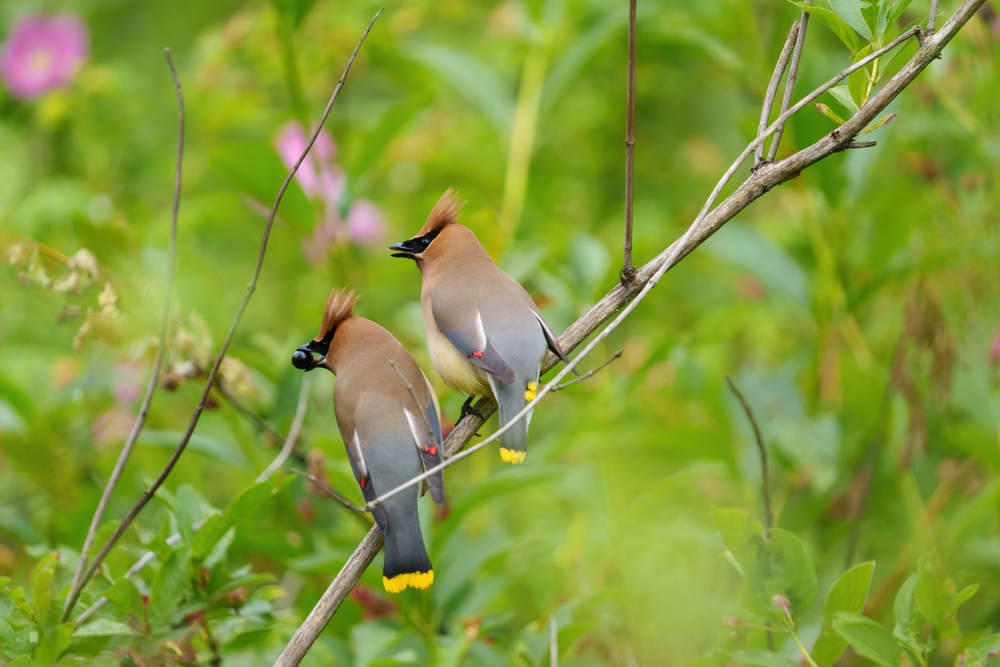
Photo Credit: 2009fotofriends
The North Georgia mountains have the honor of being a year-round home to the colorful Cedar Waxwing. These medium-sized songbirds are recognizable by their brown and gray bodies with a bright yellow-tipped tail, pale yellow belly, a black mask around the eyes, and red-tipped wings.
Your best bet for spotting these beautiful birds is in an area with running water and trees or shrubs with berries.
Ruby-Throated Hummingbird
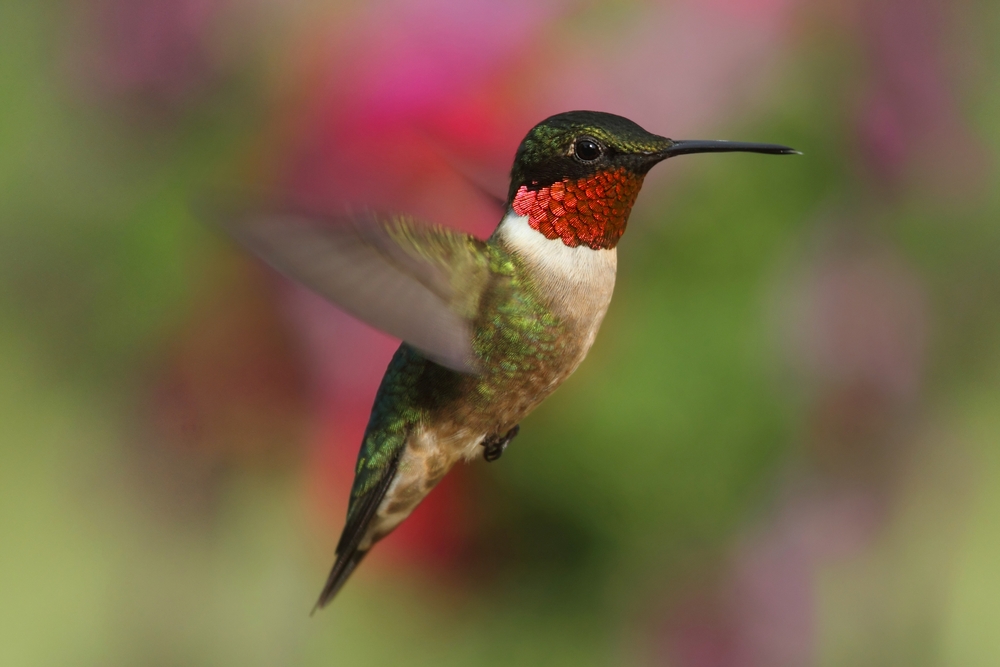
Photo Credit: Steve Byland
In the late spring and summer months, you may be lucky enough to spot a ruby-throated hummingbird. These tiny birds can be found in areas with plenty of flowers for them to feed on and are commonly spotted at backyard hummingbird feeders.
Some of the nectar-producing flowers they tend to feed on include trumpet creeper, coral honeysuckle, bee balm, buckeye, and cardinal flower.
These little birds weigh less than a quarter of an ounce and are capable of beating their wings more than 50 times per second. Hummingbirds are the only type of bird that can fly backward, so when you spot one of these cuties, be sure to watch their unique flying abilities!
Ovenbird
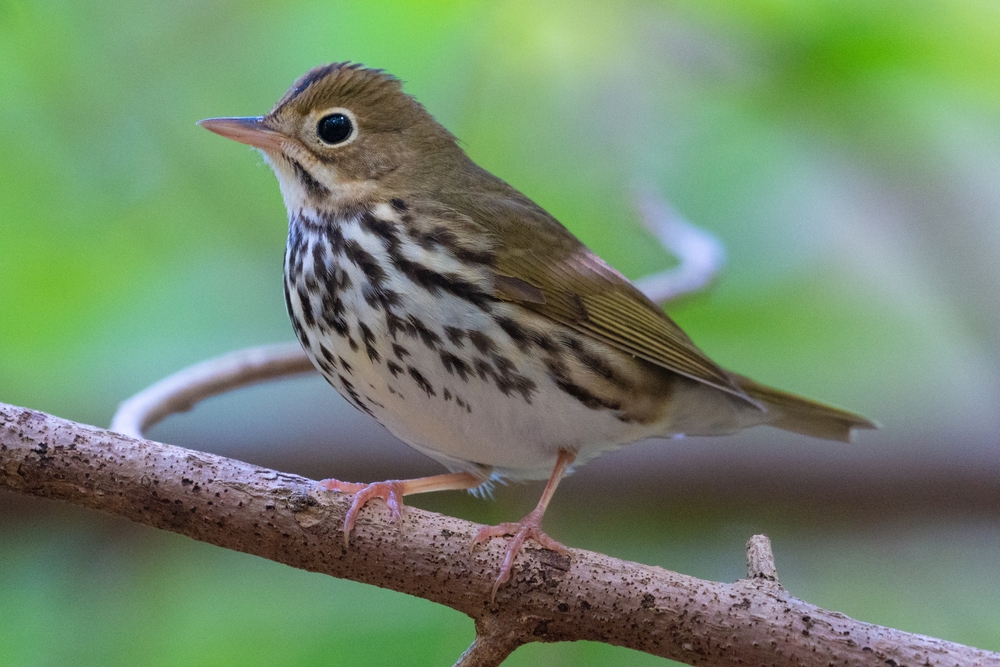
Photo Credit: Julio Salgado
Larger than a typical warbler but still smaller than a sparrow, the ovenbird is a cute, chunky bird that is a fun spot when hiking in North Georgia. These birds with olive green backs and black and white spotted bellies can be found walking along the forest floor in closed-canopy forests.
Ovenbirds are loud songbirds whose call of “teacher, teacher, teacher” rings through the forest even in the midafternoon heat.
Scarlet Tanager
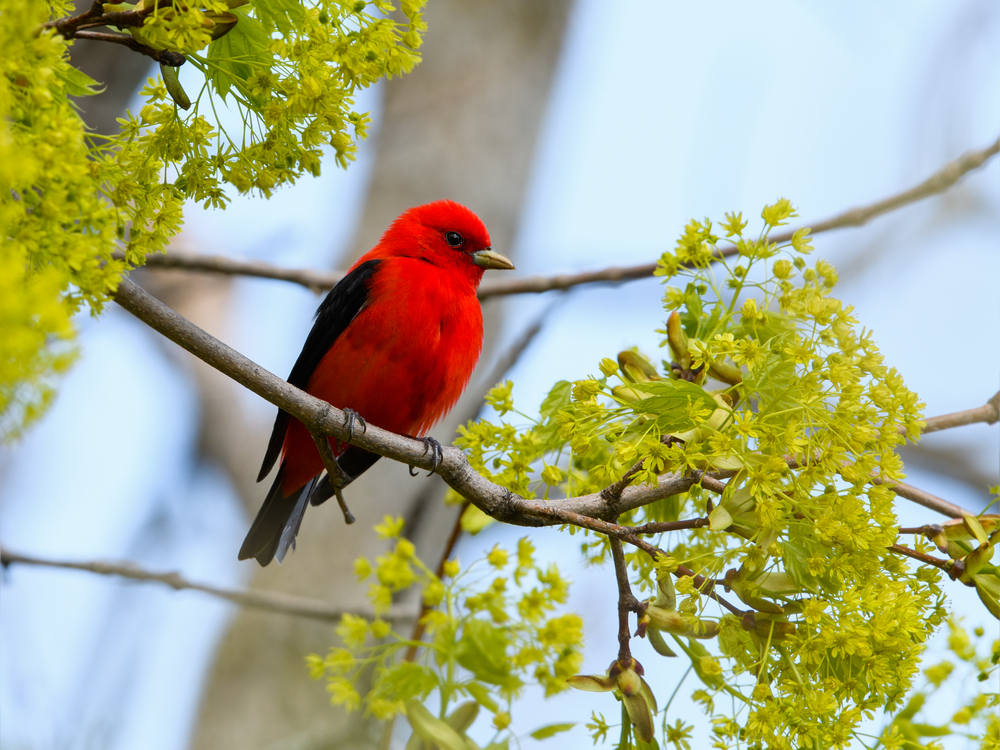
Photo Credit: FotoRequest
The scarlet tanager is one of the most strikingly beautiful birds in North Georgia. As its name suggests, breeding males sport vibrant red feathers with black wings and tails, making them an exciting spot for any ornithologist. The females are less showy but still unique, with an olive/yellow body and dark green wings.
Find the scarlet tanager throughout the Chattahoochee-Oconee National Forest, often in high, well-covered branches in quiet and undisturbed sections of forest.
Wood Thrush
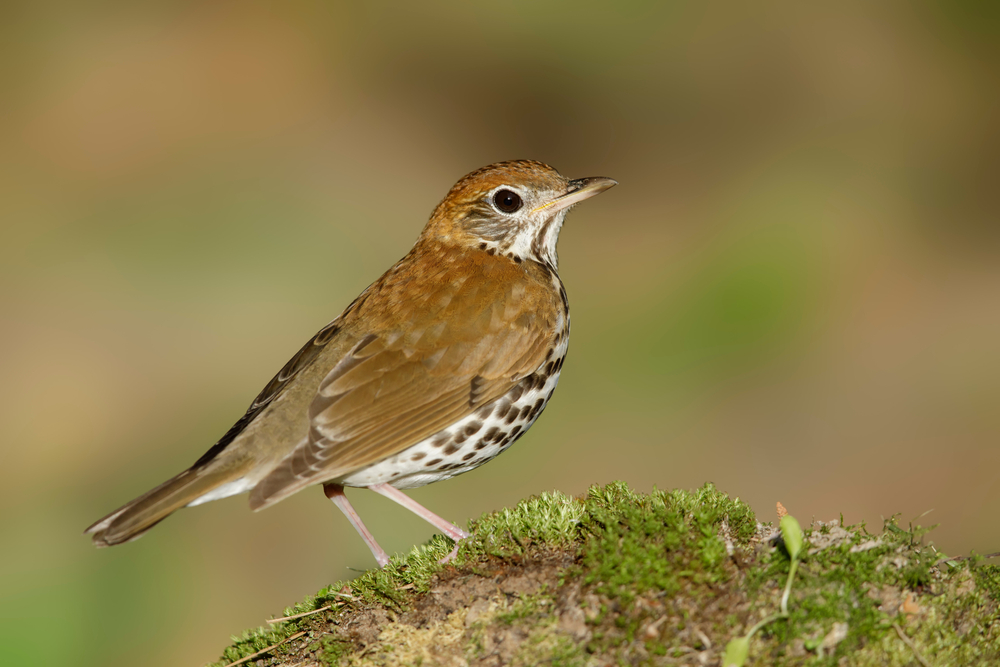
Photo Credit: Agami Photo Agency
These pot-bellied songbirds are commonly found in wooded areas of North Georgia, although their shy nature makes it unlikely to see them at a backyard feeder. Keep an eye out for the reddish-brown birds in the spring and summer as you hike through the deciduous forest areas of the Chattahoochee-Oconee National Forest.
Rose-Breasted Grosbeak
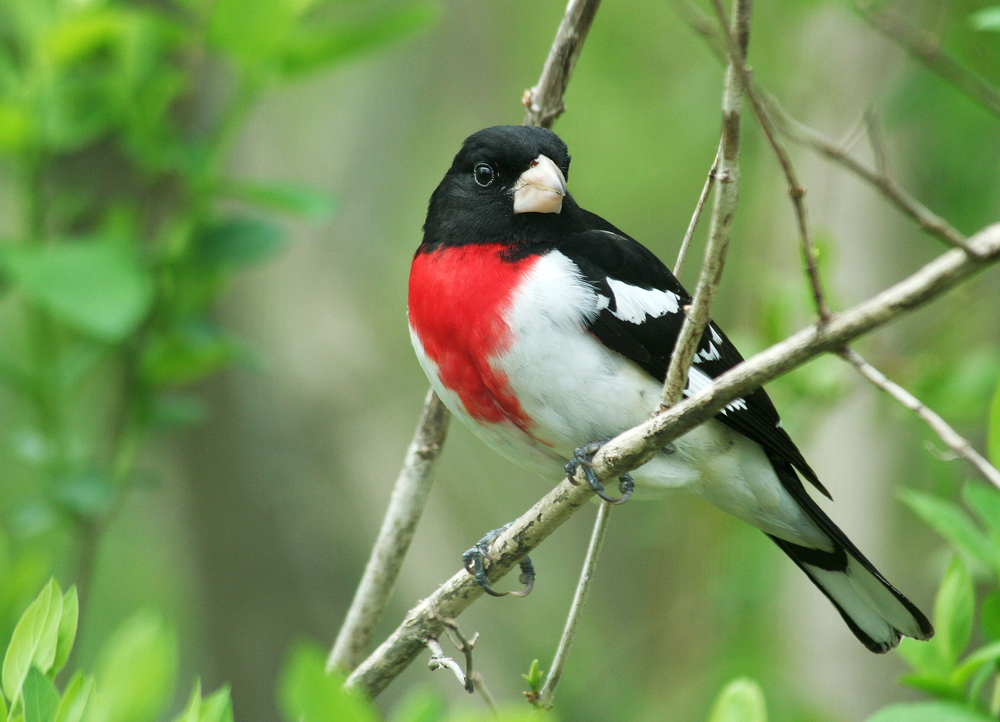
Photo Credit: Jayne Gulbrand
Similar to Scarlet Tanagers, the male rose-breasted grosbeaks are as uniquely colored as their name suggests. With a bright red chevron along their chest, a black back, and a white belly, these birds are particularly beautiful. The male and females both have recognizable triangle-shaped beaks.
Spot these birds in spring and summer months in the forests and parks of North Georgia, most commonly seen along forest edges.
Warblers
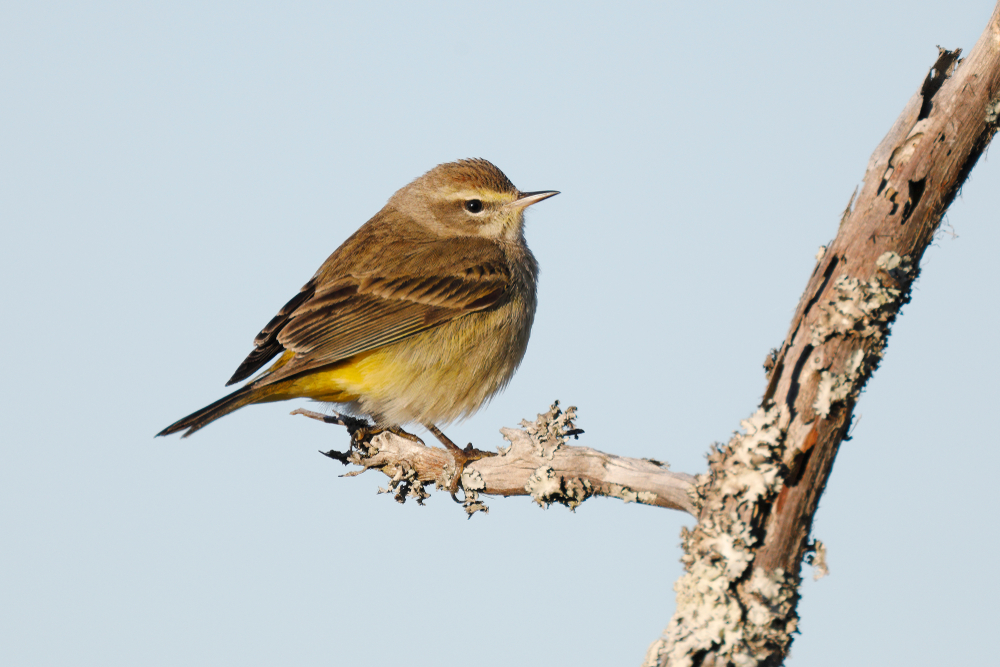
Photo Credit: Brian Lasenby
One of the most common birds in North Georgia is the warbler, named for its distinctive warbling song. Some species you can find during your vacation include the worm-eating warbler, hooded warbler, chestnut-sided warbler, black-throated blue warbler, black-throated green warbler, and Canada warbler.
You can find all types of warblers throughout the national forest and Blue Ridge mountains, and these small birds are especially easy to spot at Brasstown Bald.
Ruffed Grouse
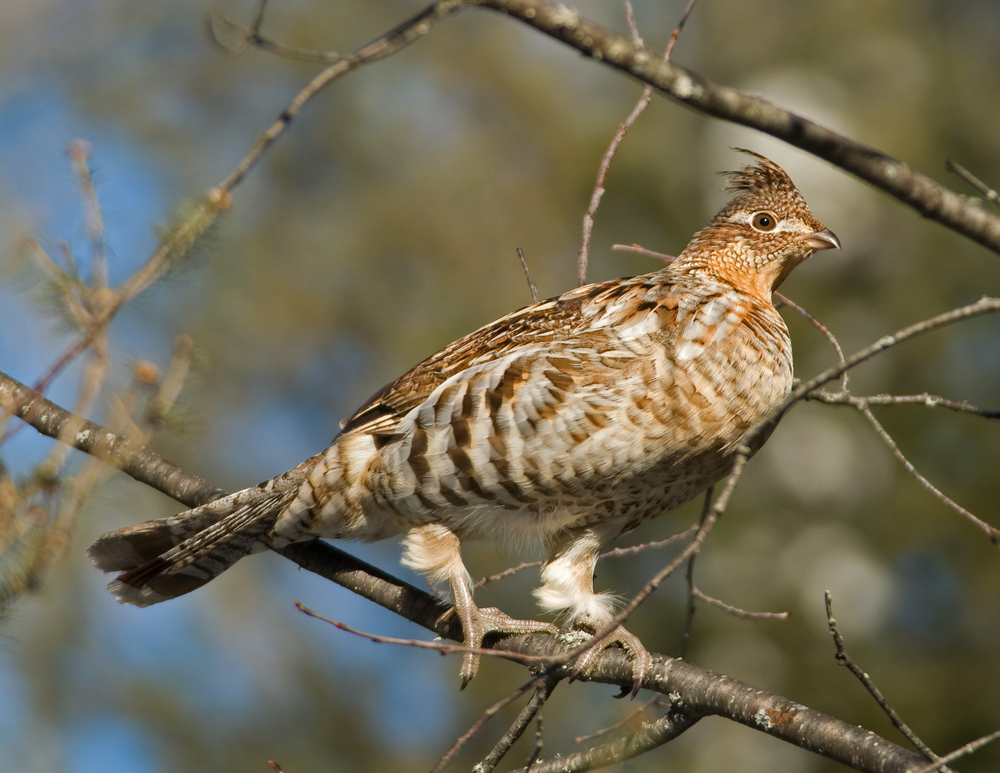
Photo Credit: Gerald A. DeBoer
A particularly interesting bird found in North Georgia is the ruffed grouse. Smaller than most grouse, the ruffed grouse is best known for its namesake ruff of feathers around its neck and its unique courtship display. Male ruffed grouses attempt to attract females with a loud “drumming” sound made by beating their wings. This sound can be heard up to 25 miles away!
Your best chance to find a ruffed grouse is in mixed forests with some small clearings and along forested streams. They are known to be active around Brasstown Bald in North Georgia.
Ducks
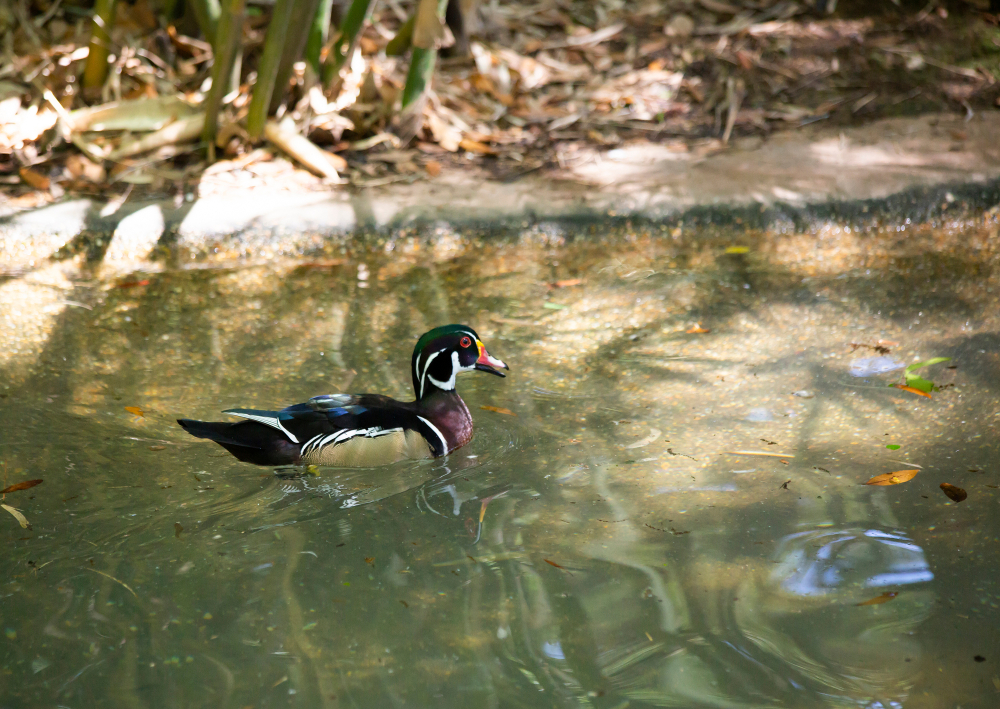
Photo Credit: Brandy McKnight
North Georgia is home to wood ducks, mallard ducks, and ring-necked ducks, and you can often find these beloved birds in ponds and lakes around Blue Ridge.
Mallards, generally the most recognizable type of duck, live in Georgia year-round. The beautiful wood duck, recognizable by the vibrant green crest of the males, is also a year-round resident of Georgia.
Ring-necked ducks can be seen all year, but they are most likely to be spotted in the winter months, from October to April.
Make your way to ponds, city parks, lakes, or slow-moving rivers for your best chance to see North Georgia’s ducks. While it is common to feed ducks in city parks, remember to avoid feeding these beauties bread and instead opt for halved grapes, corn, and peas.
Northern Cardinal
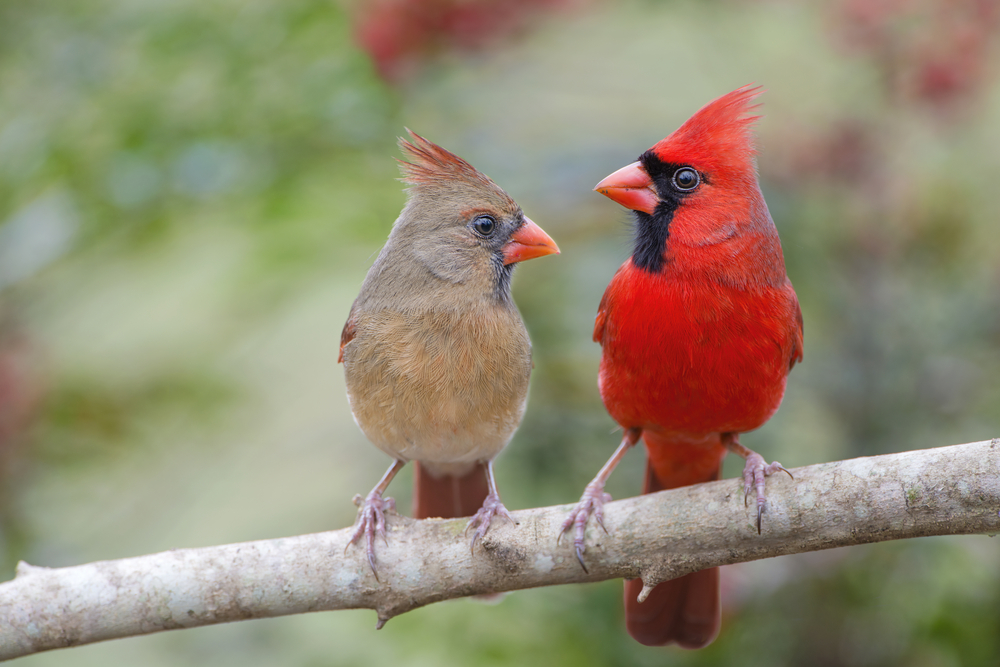
Photo Credit: Bonnie Taylor Barry
One of the most popular and recognizable birds, even among the general public, is the Northern cardinal. These ruby beauties commonly grace backyard feeders and city parks, making them accessible to the most casual birdwatchers.
Male cardinals are the ones that everyone knows: bright red feathers and black masks. However, even the females are lovely, with a golden-brown body and red accents.
You can spot cardinals in North Georgia year-round without leaving your cabin. Even in winter snow, the contrast of the bright red cardinal against the white snow is a common and welcome sight.
Pack Your Binoculars for North GA
North Georgia is home to a wide variety of beautiful and unique birds, sure to please birdwatchers of all levels. Booking a cabin getaway in the Blue Ridge Mountains will provide ample birdwatching opportunities no matter the season, and you are sure to leave with lifelong memories.
